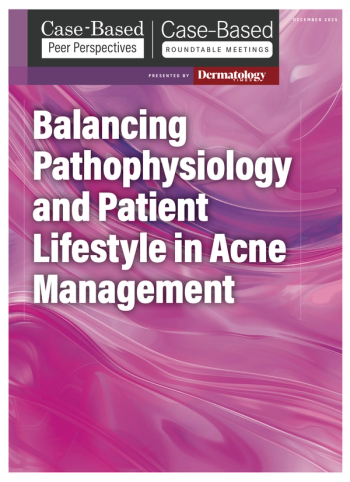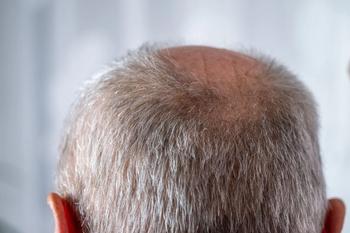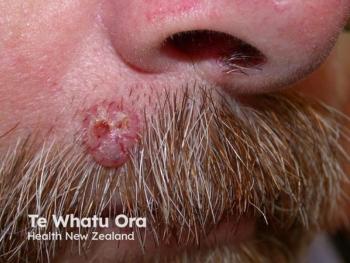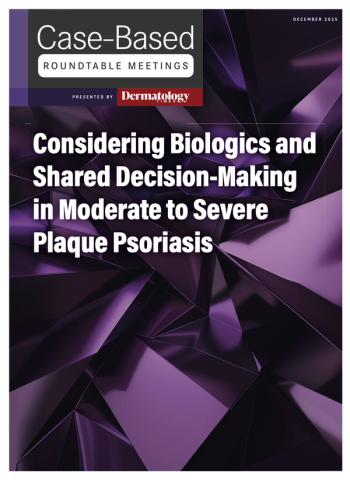
UVB Phototherapy and Tofacitinib Are Effective for Combined Vitiligo Treatment
Key Takeaways
- Combining UVB phototherapy with tofacitinib improves vitiligo treatment outcomes, showing higher recovery rates and better quality of life than UVB alone.
- The TOF-UVB group exhibited significantly lower inflammatory markers, suggesting enhanced immunomodulation through the JAK-STAT pathway.
Combining tofacitinib with UVB therapy significantly enhances vitiligo treatment outcomes, improving recovery rates and quality of life for patients.
When combining narrowband ultraviolet B (UVB) phototherapy with tofacitinib for vitiligo, investigators found that the combination therapy was more effective than UVB treatment on its own.1 After 24 weeks, patients observed improved disease severity, quality of life, and inflammatory response versus the monotherapy.
The open, double-blinded, controlled trial of 124 patients with vitiligo took place at the Affiliated People’s Hospital of Ningbo University in China. Participants were randomized to receive UVB therapy on its own (n = 61) or combined with tofacitinib (TOF-UVB group, n = 63). The 2 cohorts were comparable regarding age, gender, disease duration, disease activity, and other demographics.
The control group received UVB phototherapy and placebo twice a week, while the experimental group took 5 mg of oral tofacitinib along with UVB twice a week. UVB phototherapy was conducted using a light source of 308 nm, with a maximum single irradiation dose of 3.0 J/cm2. Treatment and follow-up lasted 24 weeks.
The Vitiligo Area Severity Index (VASI) was used along with the 10-item Dermatology Life Quality Index (DLQI) to assess efficacy. Full recovery was defined as completely eliminated white spot lesions, resolution of itching, pain, and other symptoms, and skin color “close to or back to normal.” The total effective rate was defined as the number of cured and effective cases divided by the total number of cases and multiplied by 100%.
More patients in the TOF-UVB cohort had effective recovery when compared to the UVB group (p = 0.022). About 84% of TOF-UVB patients showed superior total efficacy, compared to 65% in the UVB group. Twelve TOF-UVB participants achieved full recovery versus 6 UVB patients. The therapy was ineffective in about 35% of the UVB group. However, no adverse reactions were reported in either group.
Those treated with TOF-UVB also had considerably lower VASI and DLQI scores post-treatment, although both cohorts saw improvement overall. The TOF-UVB group had persistent inflammatory response and significantly lower levels of inflammatory factors like IL-17, IL-23, IFN-γ, and IL-6, according to enzyme-linked immunosorbent assay. There was also a positive correlation between VASI and serum IL-17, IL-23, IFN-γ, and IL-6 levels.
“The comparatively higher levels of these inflammatory markers in the UVB group indicate that UVB alone may not sufficiently suppress immune-mediated melanocyte destruction, whereas the addition of tofacitinib enhances immunomodulation by targeting the JAK-STAT pathway,” the authors wrote.
Current vitiligo therapies include topical corticosteroids, phototherapy, and surgical interventions, such as skin grafting, but these can be ineffective and lead to adverse events like skin atrophy, scarring, and an increased risk of skin cancer.2
“Our study was motivated by the lack of efficacious treatment for vitiligo, which hinders the effort to improve quality of life for those affected by this condition since vitiligo can have a significant impact on mental health, with patients experiencing anxiety, depression, and social isolation,” the authors added.
Tofacitinib, an oral selective JAK1/3 inhibitor, is currently approved for inflammatory conditions, including psoriatic arthritis, and is being evaluated in other dermatological diseases like
References
1. Guo X, Zhang D, Chen G, Xie Y, Mao Y. The efficacy of narrowband ultraviolet B phototherapy combination with tofacitinib in the treatment of vitiligo: a randomized controlled trial. J Dermatolog Treat. 2025;36(1):2479567. doi:10.1080/09546634.2025.2479567
2. Lotti T, Agarwal K, Podder I, et al. Safety of the current drug treatments for vitiligo. Expert Opin Drug Saf. 2020;19(4):499-511. doi:10.1080/14740338.2020.1729737
3. D’amico, F., Parigi, T. L., Fiorino, G., Peyrin-Biroulet, L., & Danese, S. (2019). Tofacitinib in the treatment of ulcerative colitis: efficacy and safety from clinical trials to real-world experience. Therapeutic advances in gastroenterology, 12, 1756284819848631
Newsletter
Like what you’re reading? Subscribe to Dermatology Times for weekly updates on therapies, innovations, and real-world practice tips.


















